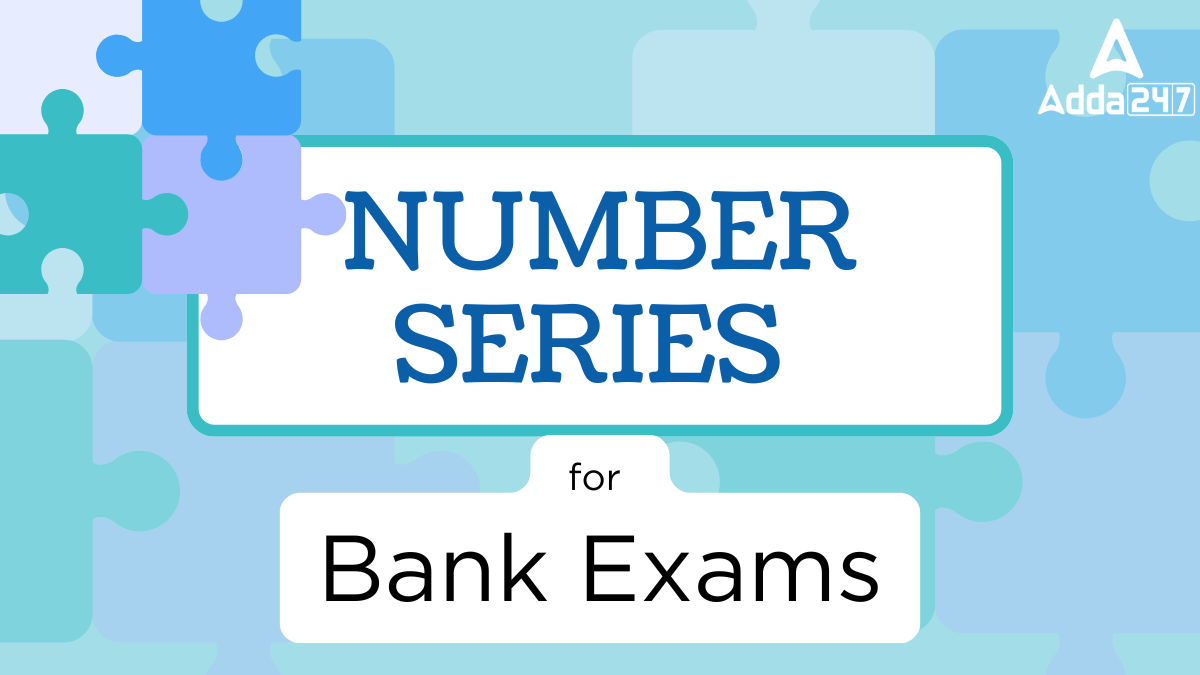Number Series is one of the most scoring and frequently asked topics in bank exams such as SBI PO, SBI Clerk, IBPS PO, IBPS Clerk, RRB PO, RRB Clerk, LIC, and other competitive tests. These questions test your ability to identify patterns, analyze numerical logic, and arrive at the missing or wrong number in a sequence. With the right approach and consistent practice, Number Series can help you secure quick marks within seconds.
Number Series for Bank Exams
Number Series is one of the most scoring topics in bank exams, with questions designed to test your ability to detect numerical patterns and solve missing or wrong terms quickly. Common number series types include arithmetic, geometric, mixed operations, squares, cubes, and difference-based patterns. By practicing common sequences, improving mental calculations, and recognizing recurring trends, candidates can solve these questions in seconds and secure easy marks in both prelims and mains exams.
Types of Number Series Questions
- Arithmetic Series: In this series, a constant number is added or subtracted to each term to produce the next term. Example: 5, 10, 15, 20, ? (Pattern: Adding 5 each time)
- Geometric Series: Each term in the series is multiplied or divided by a constant number to get the next term. Example: 3, 6, 12, 24, ? (Pattern: Multiplying by 2 each time)
- Square/Cube Series: This involves numbers that are squares or cubes of consecutive integers. Example: 1, 8, 27, 64, ? (Pattern: Cubes of 1, 2, 3, 4)
- Fibonacci Series: Each number is the sum of the two preceding numbers. Example: 0, 1, 1, 2, 3, 5, 8, ? (Pattern: Adding the last two terms)
- Mixed Series: These are complex series where a combination of different operations or alternating patterns is used. Example: 2, 4, 6, 11, 14, 20, ? (Pattern: Alternating addition and multiplication)
- Pattern-Based Series: Series based on a defined rule involving patterns such as alternate operations, skipping numbers, etc. Example: 3, 7, 15, 31, ? (Pattern: Doubling the previous term and subtracting 1)
Number Series Questions for Bank Exams
Directions (1 – 10): In each of these questions a number series is given. In each series only one number is wrong. Find out the wrong number.
Q1. 15, 22, 6, 30, – 2, 38, -10
(a) 15
(b) 22
(c) 6
(d) -2
(e) 38
Q2. 18, 5, 9, 9.5, 23, 54.5, 164.5
(a) 54.5
(b) 18
(c) 5
(d) 9
(e) 164.5
Q3. 102, 158, 218, 282, 350, 422, 500
(a) 102
(b) 218
(c) 350
(d) 500
(e) 422
Q4. 72, 52, 42, 30, 20, 12, 6
(a) 72
(b) 42
(c) 30
(d) 6
(e) 52
Q5. 125, 164, 284, 484, 764, 1124
(a) 120
(b) 125
(c) 116
(d) 108
(e) 136
Solutions:
S1. Ans(a)
Sol:
Pattern of series
Wrong number = 15
14+8=22
22-16=6
6+24=30
30 -32= -2
-2+40 =38
38-48 = -10
S2. Ans (a)
Sol. Pattern of series
Wrong number = 54.5
18×0.5-4=5
5×1+4=9
9×1.5-4=9.5
9.5×2+4=23
23×2.5-4=53.5
53.5×3+4=164.5
S3. Ans (d)
Sol. Pattern of series
Wrong number = 500
102+56=158
158+60=218
218+64=282
282+68=350
350+72=422
422+76=498
S4. Ans (e)
Sol. Pattern of series
Wrong number = 52
8×9=72
7×8=56
6×7=42
5×6=30
4×5=20
3×4=12
2×3=6
S5. Ans. (b)
Sol. Pattern of series
Wrong number = 125
124+40×1=164
164+40×3=284
284+40×5=484
484+40×7=764
764+40×9=1124
Tips for Solving Number Series Questions
- Observe Differences: Check the difference between consecutive terms to see if it follows an arithmetic or increasing/decreasing pattern.
- Look for Multiplication or Division: If differences don’t show a pattern, try multiplication or division between terms.
- Check for Squares and Cubes: Identify if the series consists of perfect squares, cubes, or a combination.
- Alternate Patterns: Verify if there are two or more sub-patterns alternating throughout the series.
- Mixed Series: For complex series, consider the possibility of mixed patterns or sequences derived from known series like Fibonacci.
- Practice Time Management: Spend a reasonable amount of time on each question. If a pattern isn’t clear within 30-40 seconds, move on and return later if time permits.




 Most Important Approximation Questions f...
Most Important Approximation Questions f...
 Quadratic Equation Questions for SBI PO ...
Quadratic Equation Questions for SBI PO ...
 500+ Quantitative Aptitude Questions for...
500+ Quantitative Aptitude Questions for...








